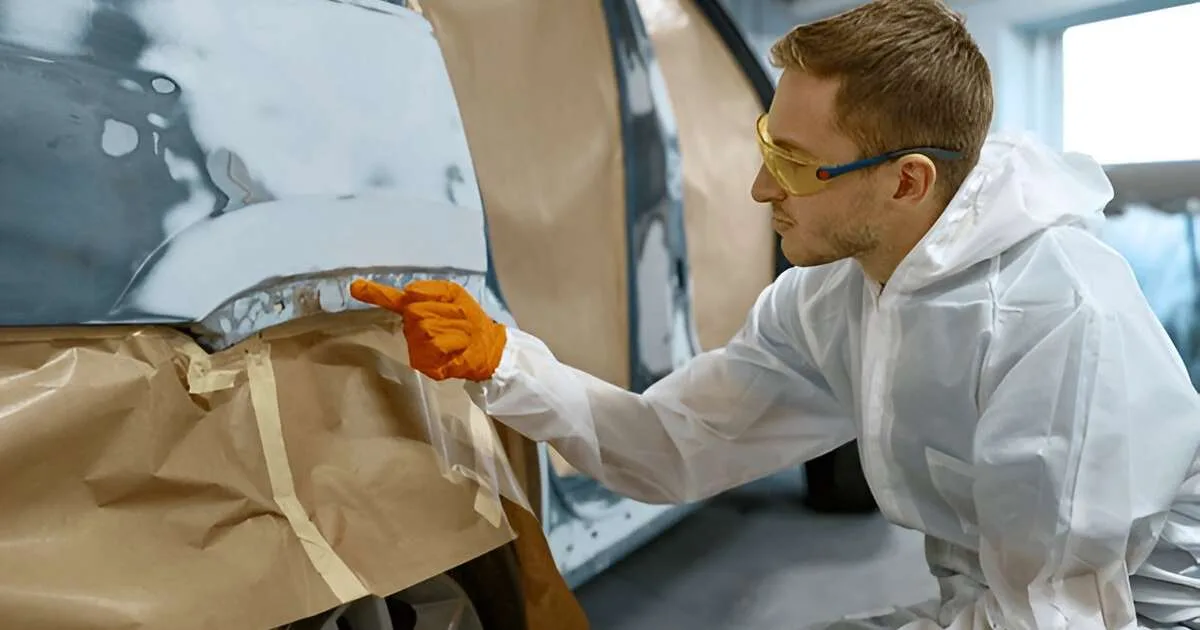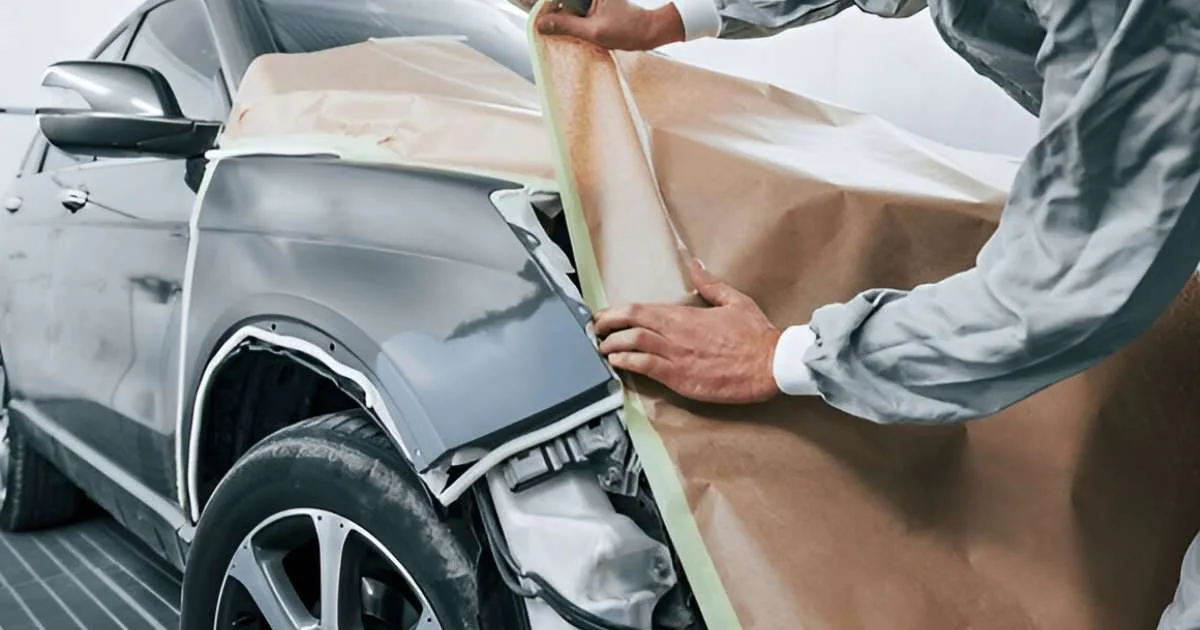
Repairing your car cover can save you both money and time. Simple Diy Car Cover Repair can extend its life significantly.
Owning a car comes with its fair share of maintenance and care responsibilities, and protecting your vehicle from the elements is a crucial part of this. A durable car cover is an excellent investment, shielding your vehicle from dust, water, and sunlight.
Yet, even the sturdiest covers can succumb to wear and tear over time. Before you consider buying a new one, a DIY repair on your car cover can be a practical and cost-effective solution. This approach not only saves you money but also reduces waste, aligning with eco-friendly practices. With basic sewing skills or adhesive patches, you can address common issues like tears or holes, ensuring your car remains protected without the need for a costly replacement.
 Materials Needed For Car Cover Repairs
Materials Needed For Car Cover Repairs
Introduction To Diy Car Cover Repair
The Importance Of Maintaining A Car Cover
A car cover is your vehicle's first defense. Regular maintenance keeps it in top condition. Ignoring small issues can lead to bigger, costlier problems.- Prevents extensive damage
- Extends the lifespan of the cover
- Ensures consistent protection for your car
When To Opt For Diy Repairs
Not all damage requires professional help. Minor issues like rips or loose seams can be easily fixed at home. DIY repairs are practical for small fixes.| Damage Type | DIY Repair Feasibility |
|---|---|
| Small Tears | Yes |
| Loose Seams | Yes |
| Broken Straps | Yes |
| Large Holes | Consult Professional |
Materials Needed For Car Cover Repairs
Choosing The Right Fabric
For a car cover repair, the fabric choice is key. You want something durable and waterproof. Look for materials like polyester or nylon. These stand up well to the weather. They also protect your car from dust and scratches.Essential Tools And Supplies
- Fabric scissors: For clean cuts on your new fabric.
- Measuring tape: To measure your repair patches accurately.
- Thread: Choose a strong, weather-resistant type.
- Sewing machine or needle: For attaching the patch.
- Fabric glue: An alternative to sewing, for easier fixes.
Identifying Common Car Cover Damage
Tears And Holes
Car covers can tear due to debris or sharp objects. Here are signs of tears:- Visible gaps or slits in fabric
- Light passing through cover
- Loose threads around edges
Loose Seams
Seams hold the cover together. They can become loose. Check these areas:- Stitching that appears undone or frayed
- Seams that gap when pulled
- Edges that no longer align
Fading And Wear
UV rays and weather cause fading and wear. Signs include:- Color that looks lighter than original
- Material that feels thin or brittle
- Surface peeling or flaking off
Simple Stitching Techniques
Hand-sewing A Rip
Hand-sewing is a quick fix for small rips. You will need a needle, strong thread, and scissors. Follow these steps for a simple repair:- Clean the area around the rip.
- Cut any frayed edges with scissors.
- Choose a thread that matches your cover's material.
- Thread the needle and knot the end.
- Start sewing from one end of the rip to the other.
- Use a basic stitch pattern for best results.
- Double back over the stitch for extra strength.
- Knot the thread securely when finished.
Using A Sewing Machine For Stronger Seams
For larger tears, a sewing machine can create stronger seams. Gather the same materials as hand-sewing, adding a sewing machine to the list. Here's how to use it:- Set up your sewing machine with a heavy-duty needle.
- Choose a thread that is strong and durable.
- Pin the torn edges together before you start.
- Adjust the machine settings for thick fabric.
- Begin sewing along the edge of the tear.
- Keep the stitch length consistent.
- Reinforce the seam by sewing over it twice.
 Using Adhesive Patches
Using Adhesive Patches
Using Adhesive Patches
Selecting The Right Patch
Choosing the right patch is key. Here's how:- Match the patch material to your cover. This ensures a good bond.
- Choose a waterproof patch for outdoor covers. It keeps your car dry.
- Pick a patch slightly larger than the tear. This covers it fully.
Steps For A Seamless Application
Follow these steps for a smooth patch application:- Clean the area around the tear. Use soap and water.
- Dry the cover completely. A hairdryer can speed this up.
- Place the patch over the tear. Make sure it's flat.
- Press firmly on the patch. Use a roller for even pressure.
- Wait for the adhesive to set. Check the patch package for time.
Reinforcing Car Cover Grommets
Is your car cover starting to show signs of wear around the edges? The grommets, those small rings that reinforce holes for securing the cover, can often be the first to fail. Yet, there's no need to buy a new cover just yet. With some basic tools, you can reinforce your car cover grommets easily at home. Here's how to save money and time by fixing those grommets yourself.
Removing Damaged Grommets
- Identify all damaged grommets on your car cover.
- Use grommet removal tools or a flat screwdriver to remove them.
- Clean the area around the hole after removal.
Installing New Grommets
- Place the new grommet's lower part under the hole.
- Position the top part of the grommet over the fabric.
- Use a grommet tool to press them together firmly.
- Check the grommet's security by pulling gently.
By following these steps, your car cover will be as good as new. Protect your car effectively without the extra expense!
Waterproofing After Repairs
Once you mend your car cover, ensuring it's waterproof is vital. The right waterproofing can shield your car from rain and moisture. It keeps the cover effective and long-lasting. Let's explore why waterproofing is crucial and how to apply waterproofing sprays correctly.
Why Waterproofing Is Crucial
Waterproofing your DIY car cover repair prevents leaks. It guards against weather damage. Your car stays dry and protected. Over time, even small leaks can lead to big problems. Mildew and mold might develop. The cover's lifespan increases with proper waterproofing.
Applying Waterproofing Sprays
For best results, follow these steps:
- Clean the cover thoroughly before spraying.
- Let the cover dry completely.
- Apply the spray evenly across the surface.
- Focus on seams and repaired areas.
- Allow for adequate drying time.
Choose a spray suitable for your cover's material. Test on a small area first. Ensure proper ventilation when applying the spray. This keeps the fabric safe and maintains its breathability.
 Tips For Preventing Future Damage
Tips For Preventing Future Damage
Tips For Preventing Future Damage
Regular Maintenance Routines
To keep your car cover effective, regular checks are key. Look for wear and tear. Clean it often. Here's a simple routine:- Inspect the cover monthly. Check for rips or thin spots.
- Wash it gently. Use mild soap. Avoid harsh chemicals.
- Dry the cover fully. Prevent mold and bad smells.
- Repair small issues quickly. Use patches or strong tape.
Proper Storage Practices
When not in use, store your car cover correctly. Here's how:- Fold the cover neatly. Avoid creases and stress.
- Keep it in a cool, dry place. Moisture can damage it.
- Avoid sharp objects. They can cause tears.
- Use a storage bag. It keeps the cover clean and safe.
Car Cover Repair Kits: Are They Worth It?
Protecting your car with a cover is smart. But what happens when the cover tears or wears out? You might think about buying a new one. Yet, there's another option: car cover repair kits. Let's explore if these kits are the smart choice for your wallet and your time.
What's Included In A Repair Kit
- Fabric patches - to cover holes and tears
- Adhesive - for securing patches
- Sandpaper - to prep the repair area
- Gloves - for clean work
- Instructions - easy-to-follow steps
Pros And Cons Of Using Repair Kits
| Pros | Cons |
|---|---|
|
|
Car cover repair kits can be a wise investment. They keep your cover working and your car safe. They are low-cost and user-friendly. Yet, they may not offer a permanent solution. Your repair skills and the damage size matter. Consider these points when choosing to repair or replace.
Conclusion: Preserving Your Car Cover
Summing Up Diy Repair Benefits
- Cost savings – No need for pricey replacements.
- Time-efficient – Repairs at your convenience.
- Personal satisfaction – Pride in self-accomplishment.
- Custom fixes – Tailor repairs to specific needs.
Encouragement For Ongoing Care
Regular maintenance extends cover life. Inspect regularly for early damage detection. Clean gently to avoid wear and tear. Store properly when not in use. Embrace these habits and your cover will last years.Frequently Asked Questions
Can I Repair My Car Cover Easily At Home?
Yes, repairing a car cover at home is doable. With basic sewing skills, appropriate fabric patches, and waterproof adhesive, you can patch holes or tears effectively. This saves money and extends the cover's lifespan.
What Materials Are Needed For Diy Car Cover Repair?
For a DIY car cover repair, you'll need fabric patches, waterproof adhesive or tape, scissors, and a sewing kit. Choose materials that are durable and compatible with your car cover's material for the best results.
How Much Time Does It Take To Repair A Car Cover?
Typically, a basic car cover repair can take anywhere from 30 minutes to an hour. The time may vary depending on the size of the damage and your proficiency with the repair tools and techniques.
Is It Cost-effective To Repair A Car Cover Myself?
Absolutely, repairing a car cover yourself is cost-effective. It eliminates the need for professional services or purchasing a new cover, with the expense mainly limited to purchasing repair materials.
Conclusion
Embrace the satisfaction of mastering DIY car cover repair with these simple steps. Not only will your wallet thank you, but your vehicle will too, sporting a cover that's as good as new. So, roll up your sleeves and let's get that cover back to its former glory, keeping your ride protected, come rain or shine.
Disclosure
Some links may be affiliate links. That means we may earn a small commission at no extra cost to you.